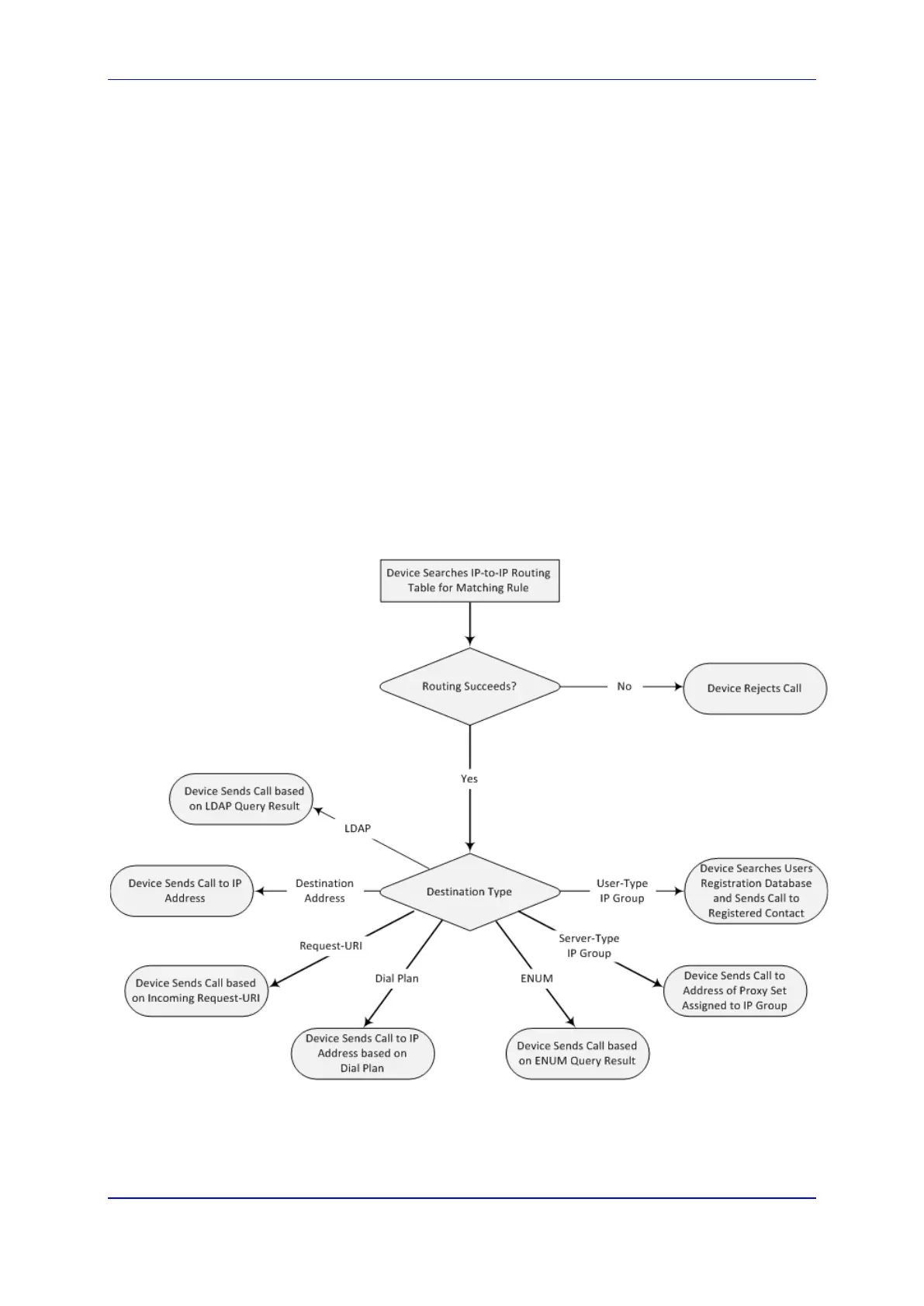Version 6.8 369 Mediant 2600 E-SBC
User's Manual 21. SBC Configuration
The device searches the table from top to bottom for the first rule that matches the
characteristics of the incoming call. If it finds a matching rule, it sends the call to the
destination configured for that rule. If it doesn't find a matching rule, it rejects the call.
You can configure the IP-to-IP routing rule to send the call to any of the following IP
destinations:
According to registered user Contact listed in the device's database (only for User-
type IP Groups).
IP Group - the destination is the address configured for the Proxy Set associated with
the IP Group (allows redundancy/load balancing).
IP address in dotted-decimal notation or FQDN. Routing to a host name can be
resolved using NAPTR/SRV/A-Record.
Request-URI of incoming SIP dialog initiating requests.
According to result of an ENUM query.
Hunt Group - used for call survivability of call centers (see ''Call Survivability for Call
Centers'' on page
347).
IP address according to a specified Dial Plan index listed in the loaded Dial Plan file.
According to result of LDAP query (for more information on LDAP-based routing, see
''Routing Based on LDAP Active Directory Queries'' on page
195).
Figure 21-9: IP-to-IP Routing Destination Types
The IP-to-IP Routing table also provides the following features:
Alternative routing or load balancing: In addition to the alternative routing/load
balancing provided by the Proxy Set associated with the destination IP Group, the
table allows the configuration of alternative routes whereby if a route fails, the next

